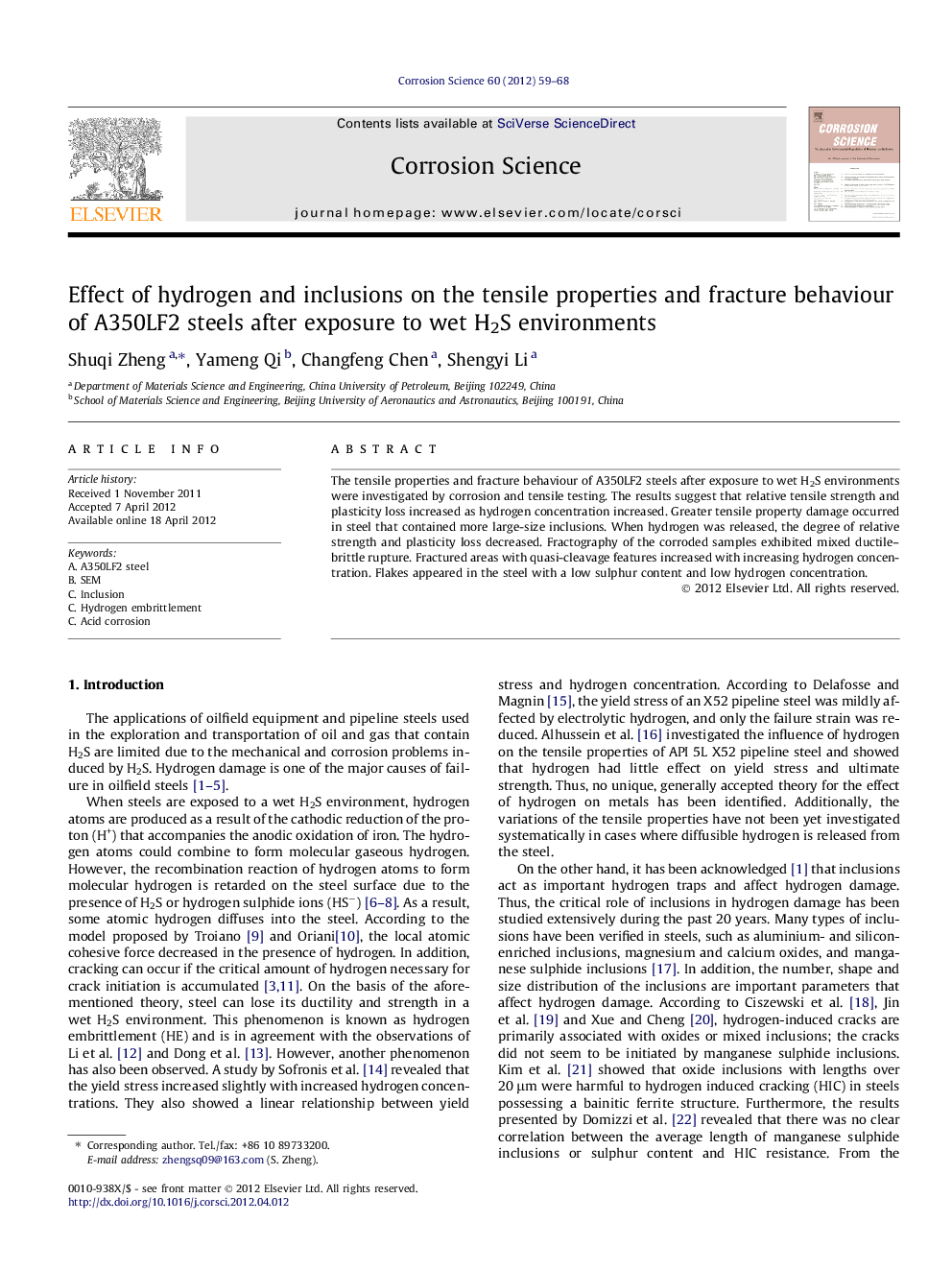| Article ID | Journal | Published Year | Pages | File Type |
|---|---|---|---|---|
| 1469532 | Corrosion Science | 2012 | 10 Pages |
The tensile properties and fracture behaviour of A350LF2 steels after exposure to wet H2S environments were investigated by corrosion and tensile testing. The results suggest that relative tensile strength and plasticity loss increased as hydrogen concentration increased. Greater tensile property damage occurred in steel that contained more large-size inclusions. When hydrogen was released, the degree of relative strength and plasticity loss decreased. Fractography of the corroded samples exhibited mixed ductile–brittle rupture. Fractured areas with quasi-cleavage features increased with increasing hydrogen concentration. Flakes appeared in the steel with a low sulphur content and low hydrogen concentration.
► Relative strength and plasticity loss increased with increasing hydrogen content. ► The degree of strength and plasticity loss decreased as hydrogen was released. ► Quasi-cleavage areas increased with increasing hydrogen content. ► Flakes appeared in the steel with a low sulphur content and low hydrogen content. ► Inclusion and hydrogen play a critical role in tensile property and fracture behaviour.
